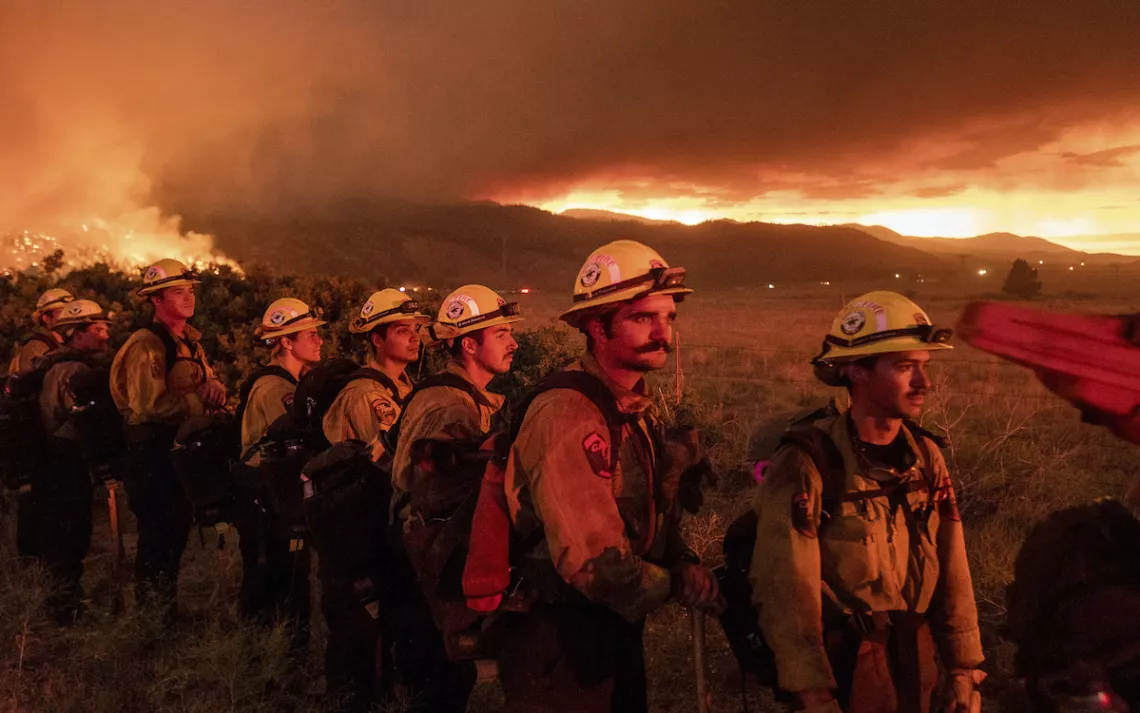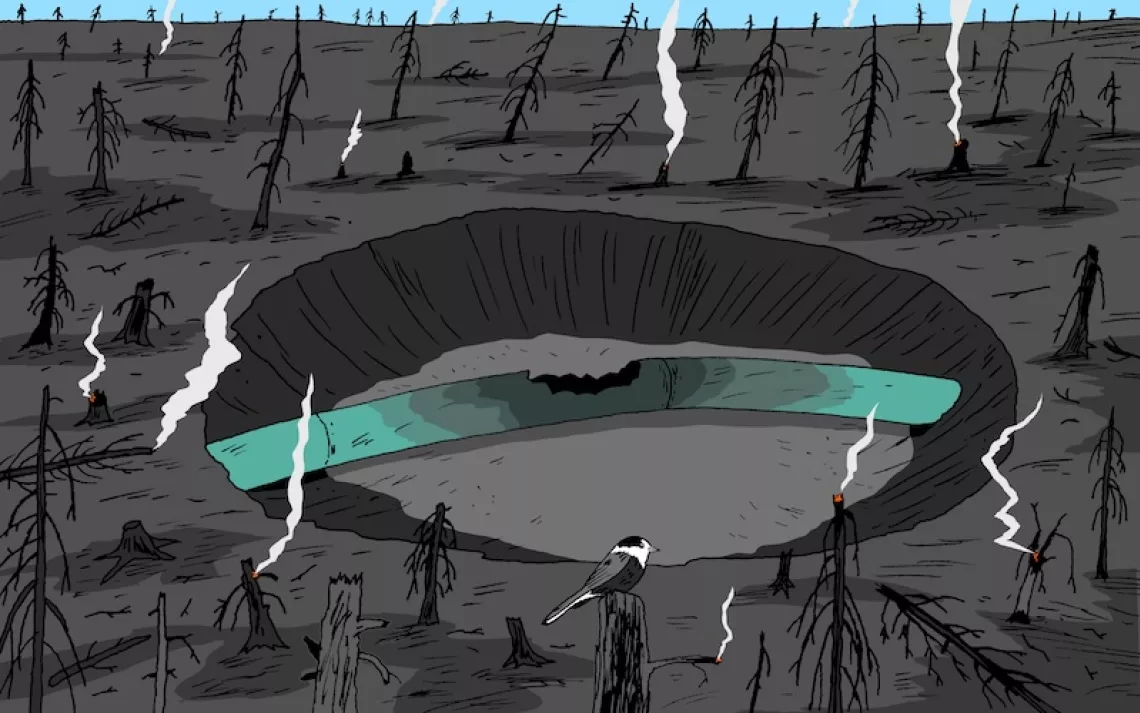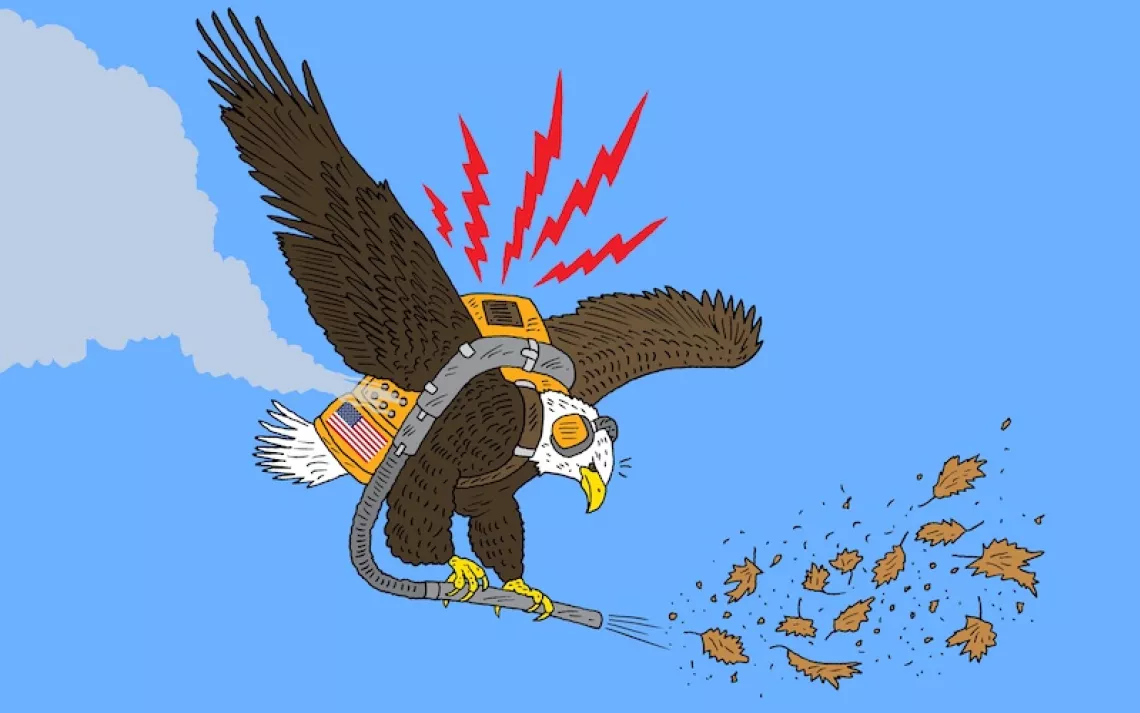Wildfires Have Changed. Why Hasn’t Firefighting?
Wildland firefighters sound the alarm on a system that leaves them underpaid and overworked

Firefighters from Cal Fire's Placerville station monitor the Sugar Fire on July 9, 2021. | Photo by AP Photo/Noah Berger
Four months after retiring from a 31-year career in wildland firefighting, Riva Duncan addressed members of Congress while holding back tears.
“I have grown weary of losing amazing friends and colleagues, and I have grown impatient with inaction,” she said, her voice wavering but clear. “The US is burning, wildland firefighters are struggling, and some are even dying. The time for reform is now.”
Duncan talked about the stress these federal employees face, about friends struggling with suicidal thoughts, and her experience bringing fallen firefighters home to their families. Some of the challenges she described stemmed from the unique conditions firefighters faced in 2020 as they dealt with COVID-19 while historically destructive fires spread across the West. Duncan was a chief fire staff officer at the time, and she says more firefighters in her program approached her with mental health distress and other issues than at any point in her career.
Those issues run deep, she explained. There’s the salary, which starts at $13.45 an hour for the seasonal workers that make up about 30 percent of the workforce. There’s the lack of benefits to address the physical and mental tolls of the job. And the job title isn’t even “wildland firefighter,” as they’re colloquially known, but the generic “forestry technician,” a description that does not even classify them as first responders or mention the word “fire.” All of that is against the backdrop of a worsening fire landscape, as conditions created by climate change and a century of suppression policies turn fire season into a year-round event.
“We're starting to struggle to fill positions,” Duncan told Sierra, citing firsthand experience as well as reports detailing an unusual number of vacancies this summer. Since retiring, Duncan has become the executive secretary of Grassroots Wildland Firefighters (GRWFF), a committee of current and former fire professionals advocating for the federal government to address these concerns.
Chuck Sheley, vice president of the National Smokejumper Association, spent years recruiting young people. Now, he says, the job has become much harder for those still in the field. The low pay certainly plays a role—“I could walk down here to Subway, and they have signs out for $16 an hour,” Sheley says—particularly when you consider the cost of living for many firefighters, who have to move away from family and friends for the job.
“How in the world can they, at $13 to $15 an hour, expect you to drive and live 400 or 500 miles away from home?” he asked. “It's just not going to work.”
Brandon Dunham, who spent more than a decade as a wildland firefighter and is one of the founding board members of GRWFF, notes that as positions remain vacant, existing firefighters have to do “more with less.” In addition, he says, the current extreme conditions only compound others, including the strain on mental health. Dunham is the host of a podcast about wildland firefighting, and he says guests and listeners alike often volunteer stories of their own struggles in this space, leading him to believe the community is bordering on a mental health crisis. While many current federal firefighters are not at liberty to speak to the press or fear retribution for doing so, Sheley cited an anonymous article in the current edition of his association’s magazine: “If we had an honest conversation,” the author writes, “we would all admit that the only surprise from the next smokejumper suicide would be the name of the individual.”
Part of the problem, Duncan explains, is that the low wages drive seasonal firefighters in particular to take on as many shifts as possible. Daily shifts often stretch into double-digit work hours, creating a demanding schedule for up to three weeks at a time. Then, those firefighters are simply sent home, often without being able to access any sort of care to address the countless hours they spent in dire situations. It’s a cycle that takes place repeatedly over the course of six to eight months, often leaving firefighters burned out and struggling to transition back into their normal lives.
“Sometimes uncontrolled wildfires will burn down your barracks or affect your family and friends or destroy entire towns. It's really hard to see that day after day, week after week, year after year,” said former wildland firefighter Amanda Monthei, who now hosts the Life With Fire podcast.
According to Monthei, this setup also fails to address some of the root causes of those worsening wildfires. With the job of suppressing fires stretching beyond a single season, there are fewer skilled workers available to do prescribed burns and other vegetation management. Over time, those mitigation tactics can help prevent future fires from becoming as extreme, but employing them will require a significant new investment.
To put it in perspective, the Forest Service estimates about 63 million acres or about one-third of its land is at “high or very high hazard” for “wildfires that would be difficult to contain.” But only 3 million acres of Forest Service land receives fuel treatments to mitigate that risk each year.
GRWFF is calling for structural shifts that would address this by giving wildland firefighters their own separate government classification and pay scheme. This would allow for new and specialized roles that prioritize both suppression and preventative work, rather than one coming at the expense of the other. They’re also asking for an across-the-board 50 percent pay raise, as well as increased health services and a reporting system to flag and track concerns.
Some of these measures are in legislation that has been introduced in the House of Representatives and in the Senate. The White House has also taken temporary measures to address the salaries and staff shortages for the rest of the year. These include instituting a $15 per hour minimum wage and supporting the creation of more year-round federal firefighting roles, as well as bringing on new hires—if they can be recruited, of course.
“I didn’t realize this, I have to admit, that federal firefighters get paid $13 an hour,” President Joe Biden said before unveiling these actions. “That’s going to end in my administration. That’s a ridiculously low salary to pay federal firefighters.”
Dunham praised the administration for taking action, though he called the actions a “Band-Aid on an arterial wound” considering the scope of the problem.
“The good thing is that it opens the door for more discussion,” he said. “And it gives people hope, especially the men and women that are on the ground fighting this year's wildfires.”
 The Magazine of The Sierra Club
The Magazine of The Sierra Club






